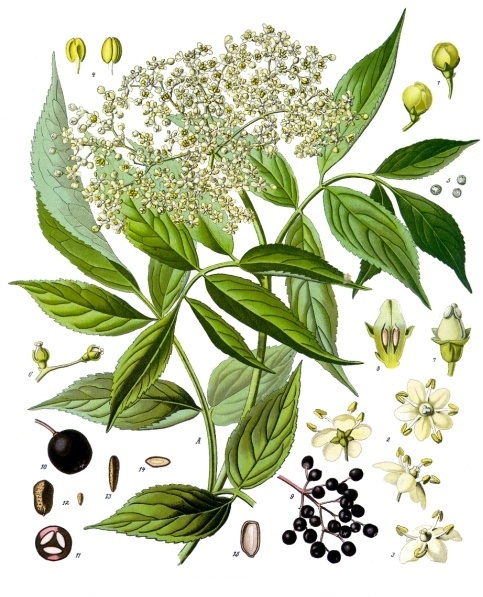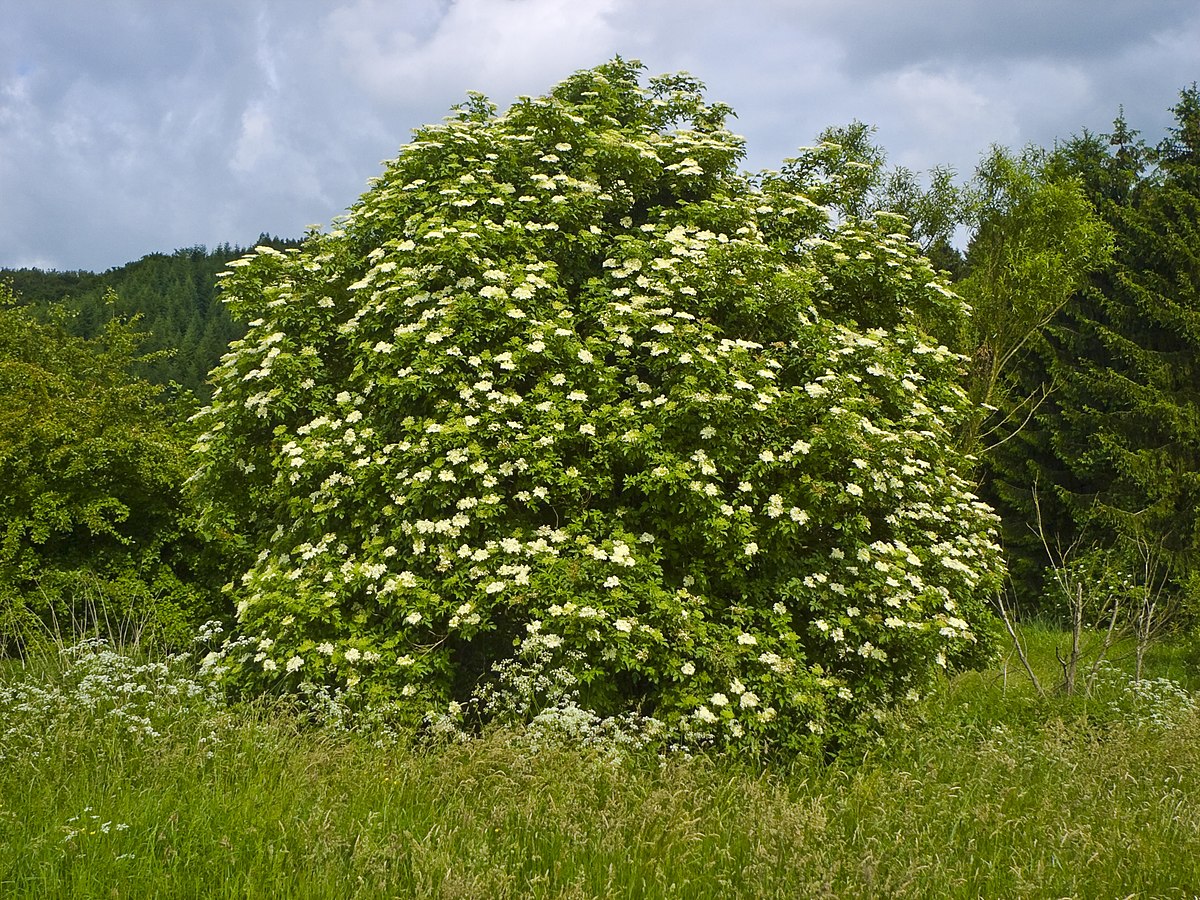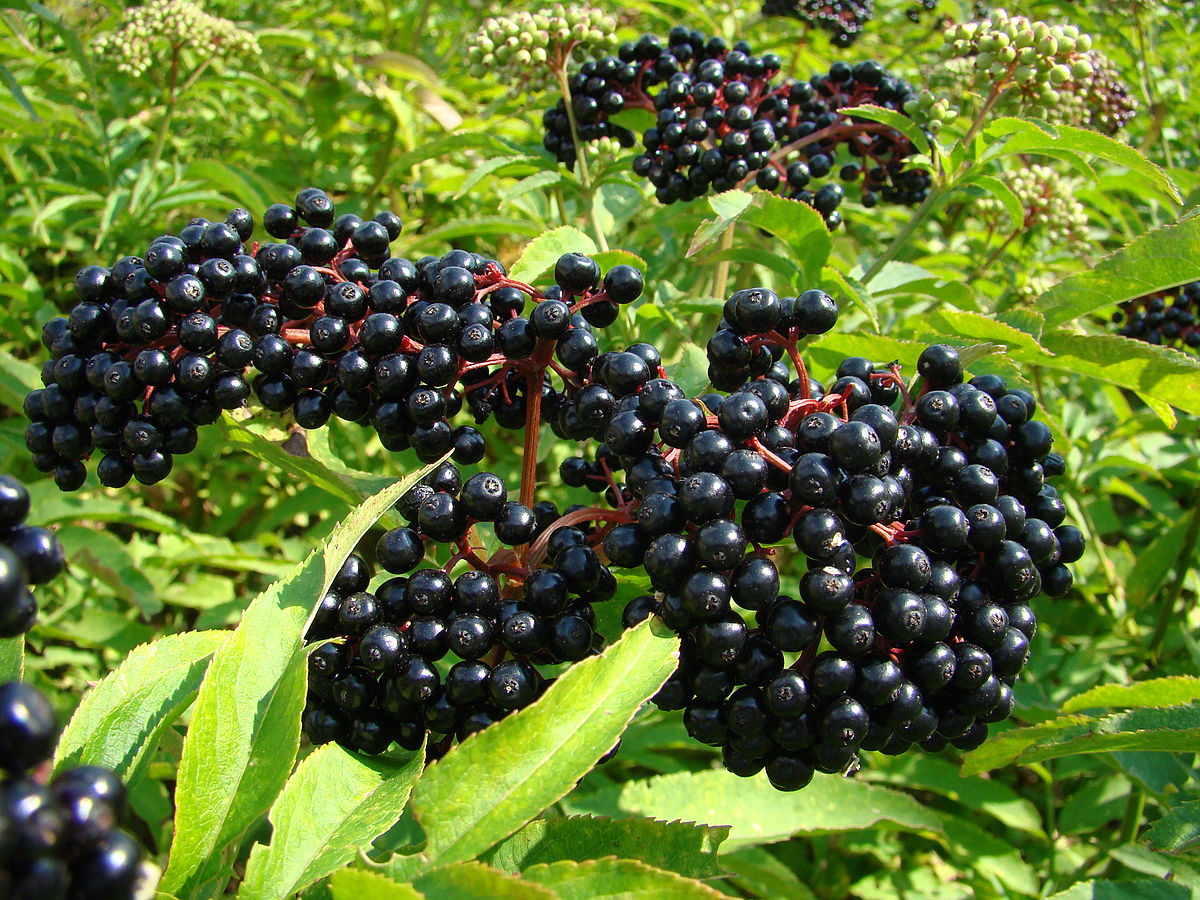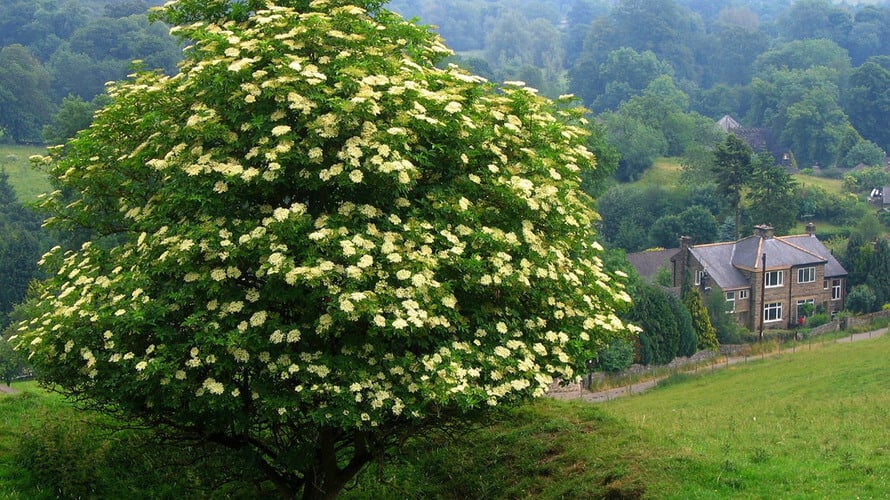Medicinal plant
History
Black elderberry has been a popular plant used for medicinal purposes for centuries.
In ancient Egypt, the plant was used
to treat burns [18] .
In Europe, flowers were formerly used to
stimulate lactation in lactating women [4] . In traditional medicine, elderberry extract was used to
treat diabetes [43] . In
North America (subsp.
Canadensis ) the plant was used by Indians to treat colds and
skin diseases [18] .
Herb raw material
According to
Farmakopea Polska, the herbal raw material is flowers (
Flos Sambuci ) and ripe (black) fruits (
Fructus Sambuci )
[4] .
However, bark ( Cortex Sambuci ), roots ( Radix Sambuci ) and leaves ( Folium Sambuci ) also have medicinal properties [44] .
Action and use in medicine
Flowers act or are attributed to them: diuretic, diaphoretic, antipyretic, expectorant, and externally also
anti-inflammatory. Fruits have laxative properties, have diaphoretic, diuretic, antipyretic, analgesic, detoxifying effects
[14] , hypolipemic (they lower triglycerides, total cholesterol and LDL cholesterol (in medical tests these views have not been confirmed
[18] ),
antiviral and immunostimulatory [45] ] . Due to the high
anthocyanin content, the fruit has a potential antioxidant effect
[18] .
Infusions of flowers are used for
colds, to treat various types of catarrh and
inflammation of the respiratory tract and rheumatic diseases.
Decoctions used to treat
migraine ,
neuralgia ,
diarrhea , rheumatic and neurological diseases are usually made of fruits , and thanks to their detoxifying properties also in metabolic disorders.
Externally, infusions of flowers are used to rinse skin with dermatitis, skin blemishes and burns,
rinse the mouth and throat with inflammation, and
wash the eyes with conjunctivitis [14]. Infusions of elderberry flowers with colds have many times more powerful effect than infusions of linden.
Bark from two and three-year-old twigs in folk medicine was used as a diuretic more potent than flowers and fruit. Elderberry flowers including
chamomile are used to reduce menstrual pain. Some recommend using a mixture of elderberries, chamomile and
rue . Fruit extracts also have a weak analgesic effect. They can be used to wash the mouth after tooth extraction and
facial nerve paralysis [4] .
Studies in mice using an aqueous extract of dried flowers confirm the effect on
glucose transport and glycogenesis in muscles. The effect on glucose uptake may be caused by the action of active substances on
insulin receptors
[43] .
Traditionally, elderberry is also used to treat viral diseases [46] . Elderberry juice is used to treat flu and colds. The positive effect of ingestion has been confirmed in
in vivo [47] and
in vitro [46] studies . The extract enables the prevention and treatment of infectious bronchitis in chickens
[48]. The beneficial effect on the health of diabetics and the improvement of the immune system is associated with the content of natural polyphenols, including anthocyanins
[49] .
The effectiveness and safety of using fruit or leaf extract as a natural antidepressant has also been confirmed
[50] . Antiviral and antibacterial activity (against
Streptococcus pyogenes groups C and G and
Moraxella catarrhalis ) has been confirmed in clinical studies
[18] . The immune-enhancing effect is associated with increased production of
proinflammatory cytokinins in human
monocytes [18] . The beneficial diuretic effect is not associated with the
solubility of kidney stones [18] .
Harvesting and drying
Flowers are collected on a sunny day when they bloom but do not fade. Avoid collecting rotten or dried (brown) raw material, as it causes rotting of the remaining raw material when drying. Flowers are cut with whole umbels. It is best to dry in a ventilated and dry place, with a thin layer, at a temperature no higher than 35 degrees Celsius. A good raw material cannot be brewed and is whitish yellow (brown should be discarded during drying). It is best to collect the fruit after a rainy day, but on a sunny day, when they are mostly fully ripe (black and purple). Green and unripe are discarded because they contain large amounts of sambunigrin
[4] [23] .
Dosage
Elderberry medicinal preparations are considered safe and are well tolerated in clinical trials. It is recommended to use an
infusion of 10-15 g flowers per day. In the case of fruit,
syrup containing about 30-38% berries is used in doses of 15 mL 3 times a day. Powdered fruit extracts are used 2-3 times a day in 500 mg capsules. Ingestion of too high doses may cause
nausea ,
diarrhea and
polyuria [18] .

 )So I'd say making a smoothie is a no-go unless you do it with the leftover pulp after making tea with them. I personally let them steep for 15 min, and havent done that with more than a teaspoon of the dehydrated ones at a time.
)So I'd say making a smoothie is a no-go unless you do it with the leftover pulp after making tea with them. I personally let them steep for 15 min, and havent done that with more than a teaspoon of the dehydrated ones at a time.






